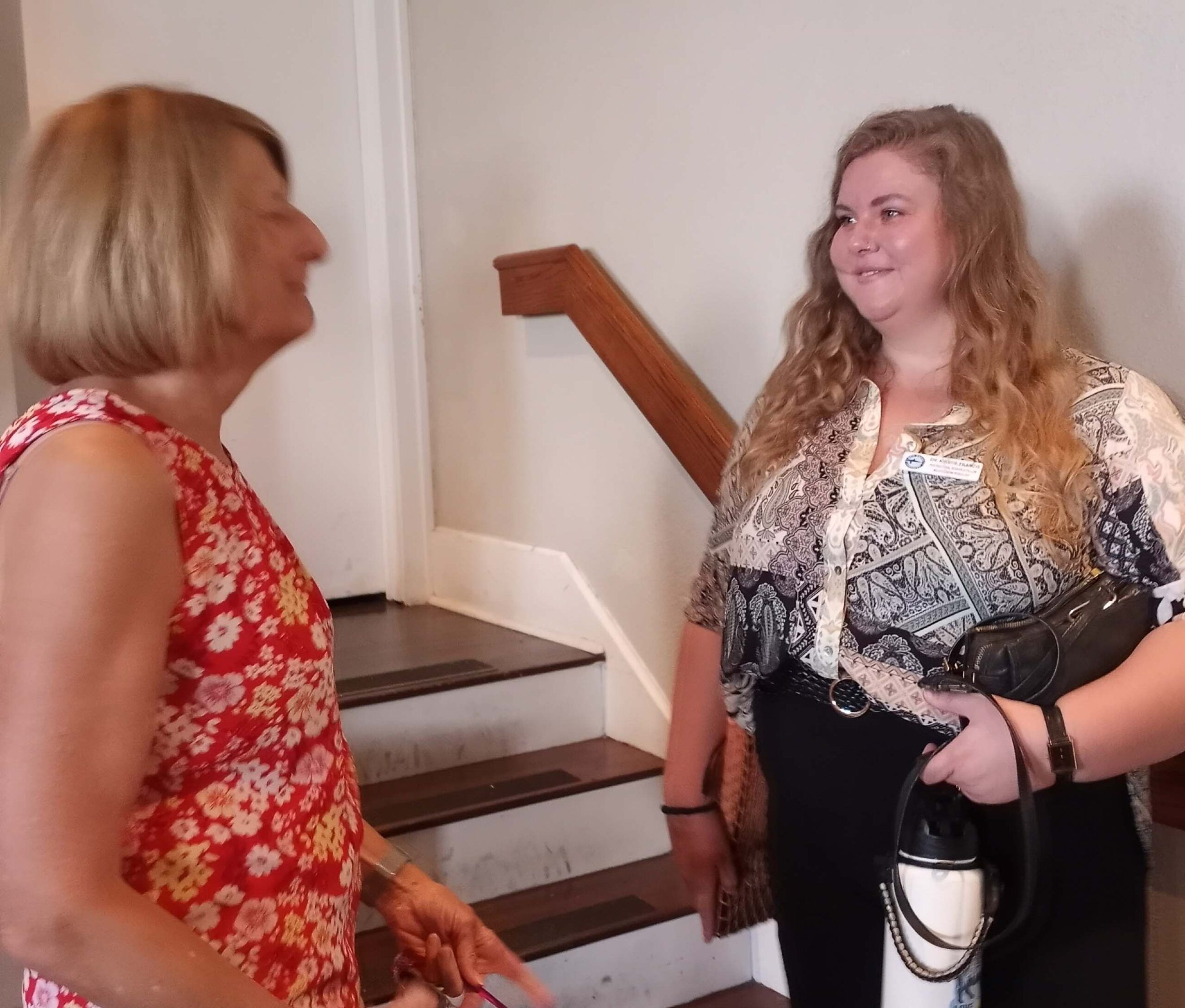Mote’s medical breakthrough from the seas

Establishing a natural drug discovery program
What might have seemed like science fiction a few years ago is real-life science at Mote Marine Laboratory. This week, Dr. Kirstie Tanberg Francis told of her work in searching for new medical breakthroughs from the ocean. Her talk closed out Mote’s 2024 Coffee with a Scientist series at the Boca Grande Community Center.
Dr. Francis is one of Mote’s new class of post-doctoral fellows, brought on board to help ensure the organization is using the most up-to-date research ideas and techniques coming out of graduate science programs. These young scientists are matched with seasoned scientists to help guide them as they develop new programs and products to benefit people and the environment.
Dr. Francis is developing a research program for Mote, using molecular microbiology to discover “natural products” that can be used as drugs to help in such things as pain management in hospitals, cancer treatments, infection control and more. These “natural products” are compounds that are extracted from marine life, such as sea slugs and sea sponges.
“This is what I love,” she said, referring not only to the important medical discoveries, but also to the excitement of exploring the seas for these hidden helpers, heading up a new program for Mote, collaborating with a variety of others who value the work, and even doing the tedious work of her research–the molecular microbiology. This is research that combines the study of the structure and function of molecules within cells, with the study of microorganisms, which include bacteria, viruses, and other single-celled organisms.
She reminded the 50 or so people attending the program that the oceans make up more than 70 percent of earth’s surface, and are home to more than 2.2 million marine species. She said the oceans, including the Gulf of Mexico, are also home to some of the most “biodiverse” and “productive” ecosystems on the planet.
She said that with biodiversity comes chemical diversity, which is a vital element of her research. Both aspects are needed for the type of outcomes her research can produce. It is the chemicals made by organisms that can be useful to humans. These chemicals are not critical for survival of the organism, but provide some type of advantage for them. In turn, that advantage may prove valuable to human, as well.
Some of them are very similar to the biochemistry of the human body, she said, so that means chemicals or compounds these marine organisms are producing might also be active in humans, and can potentially become a source for new medicines.
This is not a new concept. Dr. Francis noted that 53 percent of all small molecule medicines come from natural products. This includes such medicines as penicillin and morphene. She said there are at least 14 drugs derived from natural products already in use in the U.S. and other countries. These include antibiotics, pain relievers, medicines used in various types of cancer, and more. In addition to the 14 currently in use, a number of others are in clinical trials or in the clinical trial pipeline.
Results have been found in treating leukemia, preventing cell division in cancer cells, relieving chonic pain, serving as anti viral drugs, and more. The natual product chemicals can often attach to a specific part of a cancer cell, making the treatment of cancer more specific and less destructive to the overall body.
“It is a long, tedious road to get to the point where they can be marketed and used,” Dr. Francis said. “It is truly a multidisciplinary effort, with the discovery phase of the program calling on many people, such as chemists, sea captains, remote mechanical tool developers, biologists and more contributing to the eventual success.”
“We have already had success with marine biomedical discoveries,” she added, and is confident her developing program will add to and complement that success.
Her goals include: expanding the microbial library by sampling efforts; creating a “prefractionated library” of microbial extracts; identifying biological activity; and purifying and characterizing compounds.
Under the Mote post-doctoral program, she has three years to set up her program and make it viable. Funding is exclusively through philanthopic donations, though grants and private or public sources.
Her message to those potential funders and others is that the oceans are full of life-saving medicines. “Everyone knows someone who has been impacted by cancer or infection or a viral disease,” she said. “For the good of our society, and the good of our future, we really need to do our part to preserve these ecosystems.”





